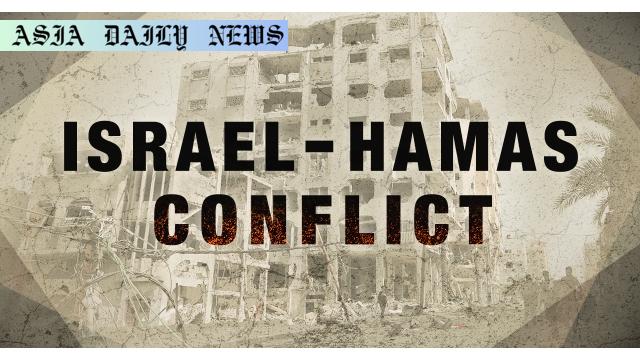Ceasefire – Israel proposes a 40-day truce in Gaza, tied to hostage negotiations with Hamas amid ongoing humanitarian concerns.
Ceasefire proposal seeks 40 days of peace during ongoing Gaza conflict.
Hostage negotiations central to Israel’s latest plan with Hamas.
Humanitarian toll rises, with over 1,000 deaths reported recently.

Background of the Ongoing Conflict
The conflict between Israel and Hamas, entrenched in years of historical tension, has taken a devastating humanitarian toll. In the last two weeks, relentless Israeli airstrikes in response to renewed clashes have claimed over 1,000 lives, as reported by local Palestinian authorities. Tragically, children are amongst the casualties, which has added fuel to rising global concern. With humanitarian aid blocked, residents of Gaza are finding themselves trapped in dire conditions, further complicating the political landscape.
Details of the Ceasefire Proposal
Israel has reportedly proposed a 40-day ceasefire in the Gaza Strip, presenting the offer as a step towards achieving stability in the region. According to Israeli media, the proposed truce is tied directly to the release of approximately 10 hostages and the provision of critical information regarding other captives allegedly held by Hamas. Previously, ceasefire periods have been fleeting. For instance, an earlier six-week truce began in January but expired by March without significant progress in negotiations. This current proposal marks a renewed attempt to pause the cycle of violence, with global focus shifting towards Hamas’s anticipated response.
Humanitarian Concerns and Global Reactions
The situation in Gaza remains precarious. With over 17 lives lost, including children, in a single day due to airstrikes, the civilian population bears the brunt of the violence. The blockade on relief supplies by Israel has exacerbated the crisis, prompting calls for immediate action from international bodies. Concerns about food shortages, medical supplies, and shelter are growing, leaving hundreds of thousands in desperate need. Amidst the turmoil, political leaders worldwide are pressing for dialogue and encouraging both parties to find common ground for a sustainable ceasefire.
Challenges and Potential Outcomes
While the ceasefire proposal appears to be a step toward de-escalation, its implementation may face numerous challenges. Hamas’s history of rejecting or renegotiating terms could impact the effectiveness of this initiative. On the Israeli side, maintaining cessation of airstrikes during the preparation period might strain internal political dynamics. This proposal, however, showcases the potential for hostilities to pause temporarily, providing a pathway to negotiate peace in stages. Long-term commitments are required, and substantial efforts must be made by all involved stakeholders to ensure that violence does not resume.
The Broader Implications of Peace
A successful 40-day ceasefire could pave the way for more extensive discussions on establishing a lasting peace between Israel and Hamas. This truce presents an opportunity to mend fractured communication channels, mitigate humanitarian crises, and alleviate tensions that have consistently devastated the lives of civilians. If global powers step in as mediators, the prospects for achieving long-term stability may grow exponentially. However, without close monitoring and accountability measures, this ceasefire risks being another temporary solution in the chronicle of conflict.



Commentary
A Critical Assessment of the Proposal’s Timeliness
The announcement of Israel’s proposed 40-day ceasefire offers a ray of hope amid a worsening humanitarian crisis in Gaza. However, the timing of this proposal raises questions regarding its sincerity and potential impact. Amidst surging international criticism over the humanitarian toll of Israeli airstrikes, the timing could be seen as a calculated move to deflect criticism rather than a genuine step toward peace. This skepticism stems from a prolonged history of broken ceasefires, leaving many to wonder whether this truce is meant to provide meaningful relief or temporarily suppress tensions.
The Role of Humanitarian Concerns
One cannot ignore the catastrophic humanitarian conditions unfolding in Gaza. The blockade of relief supplies and subsequent shortages of essentials such as food and medicine make the ceasefire not just a diplomatic necessity but a moral imperative. The success of this initiative will depend on whether it alleviates the suffering of Gaza’s residents while facilitating unfettered access to humanitarian aid. For many onlookers, prioritizing civilian well-being has never been more urgent.
Challenges to Implementation
The stipulations attached to this ceasefire, such as the release of hostages and information pertaining to others, introduce significant challenges to its execution. While the terms may appear pragmatic, they might further exacerbate mistrust between the two sides, hindering progress. Furthermore, any acts of aggression during the truce period could reignite hostilities, rendering the entire proposal null and void. If not carefully monitored or enforced, this ceasefire risks becoming another futile gesture in the long saga of the Israel-Palestine conflict.
Hopes for Sustainable Peace
Despite these challenges, the success of this ceasefire could be monumental in paving the way for longer-term peace. Both parties stand to gain from reduced hostilities, improved public perception, and the re-establishment of trust through small, incremental successes. Moreover, this could be the window the international community needs to push for broader, more binding agreements. Ultimately, while this proposal may not signify the end of the conflict, it represents a vital step toward peace, one that carries the hopes and prayers of countless lives caught in the crossfire.